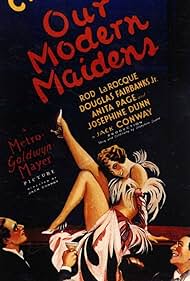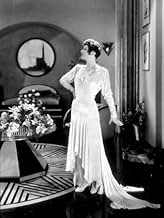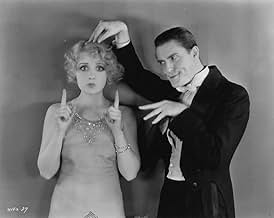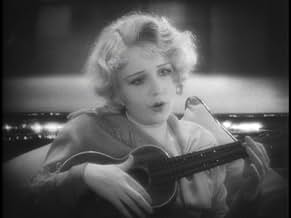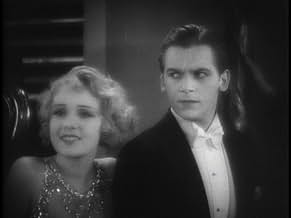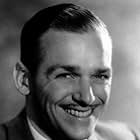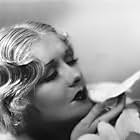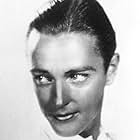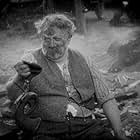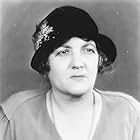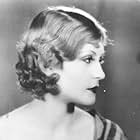A flapper charms a diplomat to procure her fiancé a career opportunity, while the fiancé starts a relationship with her best friend.A flapper charms a diplomat to procure her fiancé a career opportunity, while the fiancé starts a relationship with her best friend.A flapper charms a diplomat to procure her fiancé a career opportunity, while the fiancé starts a relationship with her best friend.
- Awards
- 3 wins
Edward J. Nugent
- Reg
- (as Edward Nugent)
Edwina Booth
- Undetermined Role
- (uncredited)
Carrie Daumery
- Wedding Guest
- (uncredited)
Geraldine Dvorak
- Garbo Look-a-like Party Guest
- (uncredited)
Anita Garvin
- Bridesmaid
- (uncredited)
Stuart MacChesney
- Child in the Wedding
- (uncredited)
Earl McCarthy
- Party Guest
- (uncredited)
- Director
- Writers
- All cast & crew
- Production, box office & more at IMDbPro
Storyline
Did you know
- TriviaThis was Joan Crawford's last silent film.
- GoofsWhen Billie enters her apartment upon her return to Paris, she removes her cloche hat and flings it onto the sofa. In the next shot as she sits on the sofa, the hat is back in her hand and she again tosses it down next to her.
- Quotes
Train Porter: Lunch is poured!
- ConnectionsEdited into Hollywood: The Dream Factory (1972)
- SoundtracksShould I
(1929) (uncredited)
Music by Nacio Herb Brown
One of the main themes played throughout the movie
Featured review
Our Modern Maidens was MGM's follow-up to the previous year's Our Dancing Daughters. Key personnel were the same: cast members included rising star Joan Crawford and second lead Anita Page, as well as supporting actor Edward Nugent. Josephine Lovett again wrote the story and "continuity," Cedric Gibbons again designed the sets in art deco fashion, and William Axt had a central role in music supervision which again consisted of popular tunes of the day matched carefully to the emotion or tone of the scene. It's almost like watching an opera without sung words. In this film the audio bits are more numerous and painstakingly crafted than in Our Dancing Daughters. Ambient sound is used as often as possible. If we are watching cars speed down a road we hear the engines. If a radio is playing, we hear the announcer as well as the music. When a crowd is shown we hear the hubbub of voices, the clapping of hands, etc.
The theme of both movies seems to be old morals vs new or good, straight-arrow behavior vs devious badness, topics not uncommon in American popular culture during the 20s. In both films Joan Crawford is the wealthy, spirited heroine who goes after what she wants without a second thought to the consequences; she makes mistakes and pays for them but gets her well-earned rewards in the end. She is again opposed to Anita Page who hankers after the same man. Crawford does a lot of gesturing with her fingers in both Daughters and Maidens and seems to have developed a tight repertoire of definite facial expressions, often involving motion of the lips. Page acts with her whole body and is more natural and convincing. But neither is unwatchable.
Both films examine "flaming youth," perpetually in motion, laughing uproariously about one thing or another, jumping into jalopies to go on midnight joy rides, swilling bootleg booze with gleeful abandon, encountering pitfalls and bouncing back in the endless, desperate quest to have fun and embody modernity, which in its essence seems to mean accommodation to a female equality. When the characters in this scenario talk about being "modern" they are referring to the notion that a newlywed bride can go her own way if she chooses, rather than accompany her husband on the honeymoon.
As for leading men, we get a very young Douglas Fairbanks Jr. as the fought-over fiancé. He comes across splendidly in the silence, looking much older than the 19- or 20-year-old he actually was when he made this. His early talkie performances were often stilted but here he seems a master of the craft. Rod LaRoque is perfect as the more mature and sophisticated love interest to the Crawford character. Edward Nugent returns as the perennial happy-go- lucky boy-man.
The theme of both movies seems to be old morals vs new or good, straight-arrow behavior vs devious badness, topics not uncommon in American popular culture during the 20s. In both films Joan Crawford is the wealthy, spirited heroine who goes after what she wants without a second thought to the consequences; she makes mistakes and pays for them but gets her well-earned rewards in the end. She is again opposed to Anita Page who hankers after the same man. Crawford does a lot of gesturing with her fingers in both Daughters and Maidens and seems to have developed a tight repertoire of definite facial expressions, often involving motion of the lips. Page acts with her whole body and is more natural and convincing. But neither is unwatchable.
Both films examine "flaming youth," perpetually in motion, laughing uproariously about one thing or another, jumping into jalopies to go on midnight joy rides, swilling bootleg booze with gleeful abandon, encountering pitfalls and bouncing back in the endless, desperate quest to have fun and embody modernity, which in its essence seems to mean accommodation to a female equality. When the characters in this scenario talk about being "modern" they are referring to the notion that a newlywed bride can go her own way if she chooses, rather than accompany her husband on the honeymoon.
As for leading men, we get a very young Douglas Fairbanks Jr. as the fought-over fiancé. He comes across splendidly in the silence, looking much older than the 19- or 20-year-old he actually was when he made this. His early talkie performances were often stilted but here he seems a master of the craft. Rod LaRoque is perfect as the more mature and sophisticated love interest to the Crawford character. Edward Nugent returns as the perennial happy-go- lucky boy-man.
- How long is Our Modern Maidens?Powered by Alexa
Details
- Release date
- Country of origin
- Language
- Also known as
- Devojka našeg doba
- Filming locations
- Production company
- See more company credits at IMDbPro
- Runtime1 hour 16 minutes
- Color
- Sound mix
Contribute to this page
Suggest an edit or add missing content

